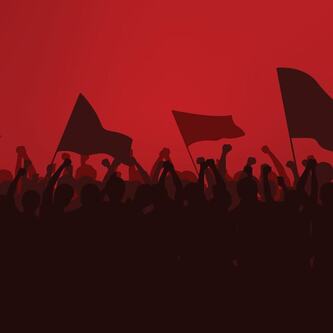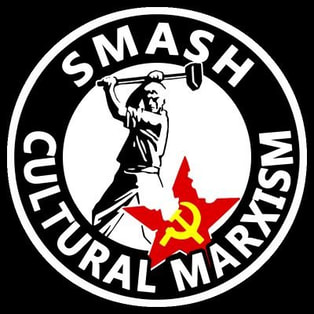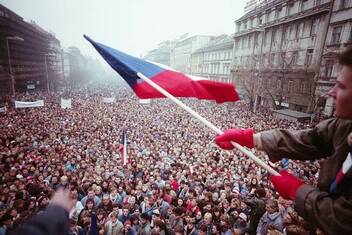 To see a video on meeting with Mandela Click here for Part 1 and Part 2. To see a PowerPoint on this Article Click Here Resistance is Respected - Weakness is Despised There is nothing communists respect more than strength. There is nothing they despise more than weakness. Those people who think that they can calm the situation by bowing to the mob, washing their feet, or brushing, or kissing their boots, not only figuratively, but literally, have no idea that all they are doing is greatly aggravating the situation and encouraging the revolutionaries to demand far, far more. Never Bow to Bullies In my experience, it is absolutely essential that one never gives Marxist bullies, or mobs, a millimetre. If you give them an inch, they will take a mile. First-hand Experience Being brought up in war-torn Rhodesia, experiencing terrorism and revolution, working in communist Angola and Mozambique, being imprisoned in Zambia and Mozambique and in so many other cases I have seen: the more steadfastly and strongly you stand, the better. The moment Marxists sense weakness, fear, or compromise, they smell blood and will only howl for more and escalate their unreasonable demands.
1 Comment
 To view this article as a PowerPoint presentation, click here. To listen to an audio which includes this article, click here. To view a video which includes this presentation, click here. Frontline of Resistance When Communism controlled one third of the world’s land surface and population, Rhodesia, South West Africa and South Africa were in the very frontline of the hot part of the Cold War, resisting the southward expansion of Soviet sponsored Communist terrorism. Hard Targets Other hotspots in the frontline of resistance to Communist Revolution were: South Korea; Chile; Taiwan (Free China); Afghanistan; Nicaragua and of course the iconic symbol of the Cold War: The Brandenburg Gate as part of the Berlin Wall, dividing the capital city of Germany between the Soviet occupied German Democratic Republic (GDR) and the Federal Republic of West Germany. The Hot Part of the Cold War However, after the conclusion of the Korea War (1950-1953) and the Vietnam War (in 1975), the hottest part of the Cold War was Southern Africa.  To listen to an audio of this message, click here. To view a video of this presentation, click here. To view a PowerPoint of this presentation, click here. As a Missionary, who for 38 years has concentrated on serving persecuted Christians in Restricted Access Areas, I have travelled in 42 countries and worked in 38 countries across 4 continents. This included throughout Eastern Europe, behind the Iron Curtain, during the Cold War. Yugoslavia When I first visited Yugoslavia and heard people in Croatia speaking about their need for independence, I was highly skeptical that it could succeed. Yugoslavia consisted of six republics, five nations, four languages, three major religions, two alphabets, but only one political party – the Communist Party. Croatia In 1990, the first multiparty elections were held in Croatia. On 25 June 1991, Croatia declared independence, which came into effect 8 October 1991. By 15 January 1992, Croatia was recognised as an independent country by the European Economic Community. The aggression by Yugoslavia was effectively ended August 1995, with a decisive victory by Croatia. Since then, 5 August has been observed as a Victory and Homeland Thanksgiving Day. |
More Articles
All
Archives
August 2022
|
"And Jesus came and spoke to them, saying, “All authority has been given to Me in heaven and on earth.
Go therefore and make disciples of all the nations, baptizing them in the name of the Father and of the Son and of the Holy Spirit,
teaching them to observe all things that I have commanded you; and lo, I am with you always, even to the end of the age.” Amen.” Matthew 28: 18-20
Go therefore and make disciples of all the nations, baptizing them in the name of the Father and of the Son and of the Holy Spirit,
teaching them to observe all things that I have commanded you; and lo, I am with you always, even to the end of the age.” Amen.” Matthew 28: 18-20
|
P.O.Box 74 Newlands 7725
Cape Town South Africa |
|
 RSS Feed
RSS Feed
